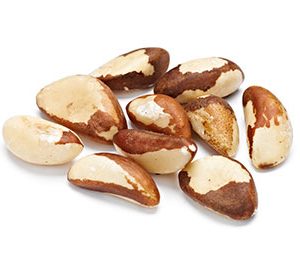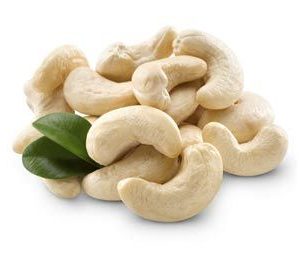A naturally gluten-free grain, chia has been a somewhat unknown commodity in the U.S. until recent years, with its market value gradually increasing as more people switch to healthier diets. While chia seeds are only starting to snowball in terms of popularity, the majority of its crops have been grown in other countries for years.
Top producers of chia seeds include Bolivia, Argentina and Ecuador, with Mexico and Australia close behind. As its nutritional attributes have been revealed — such as lowered stroke and heart disease risk — the chia plant’s tiny mottled brown and white seeds and the oils inside them are being recognized for their off-the-charts health value.
Chia is a member of the Labiatae family with several close relatives, such as tulsi, peppermint and thyme. Before chia was reintroduced as a health food, it was already an important food source for Native Americans. It’s considered a staple food for the Salinan, Costanoan Paiute and Maidu tribes. Europeans eventually learned of the medicinal uses of chia, adopting it as a fever remedy.
Today, awareness regarding chia’s commercial viability seems to be growing rapidly, especially in the US. In fact, the first American company to grow the plants and market chia seeds, US Chia, was founded in 2014 near Louisville, KY. US Chia’s first focus was equine feed, but growing interest in the marketplace is driven by its use in a wide variety of foods, including cooking oil and supplements.
There are numerous ways you can incorporate chia seeds into your diet. You can enjoy chia as a pudding, an additional ingredient to your healthy smoothies and yogurt, a topping for your salads or as a jam.
Chia seeds aren’t typically eaten or prepared right after harvest. They can last for up to 12 months, which is why storing these seeds properly is important. The good news is that the phenols they contain stop the oxidative deterioration that may occur.
Health Benefits of Chia
Omega-3 represents an impressive 65% of chia’s total oil content. These little seeds are also rich in valuable amino acids, antioxidants and flavonoids, including chlorogenic acid, caffeic acid, myricetin, quercetin and kaempferol. Along with other benefits, a 2003 study from Biochemical Pharmacology shows quercetin and kaempferol have possible preventative effects against postmenopausal bone loss.
As a low-cholesterol and low-sodium food, chia seeds boast high levels of potassium, calcium and phosphorus, which are important for nerve and bone health. Niacin, a B vitamin, is another nutrient that helps reduce LDL (bad) cholesterol levels in the blood, manage nervous system disorders and increase GABA activity inside the brain, which in turn helps reduce anxiety and even lessen the effects of Alzheimer’s.
Predictably, chia contains high amounts of dietary fiber, which helps you feel full faster and may contribute to weight loss. Chia seeds may promote regular bowel movement and digestion by promoting the “peristaltic movement of the intestine.” Fiber also has the additional benefit of inhibiting the body’s penchant for breaking food down to sugars, resulting in more stable blood glucose levels. Check out the other nutrients you can get from chia seeds in the chart below.
| Chia Seeds Nutrition Facts
Serving Size: 3.5 ounces (100 grams), dried |
||
| Amt. Per Serving |
||
| Calories | 486 | |
| Total Fat | 30.74 g | |
| Saturated Fat | 3.33 g | |
| Cholesterol | 0 mg | |
| Sodium | 16 mg | |
| Total Carbohydrates | 42.12 g | |
| Dietary Fiber | 34.4 g | |
| Protein | 16.54 g | |
| Vitamin A54 IU | Vitamin C | 1.6 mg |
| Calcium631 mg | Iron | 335 mg |
Studies Done on Chia
In a 2012 study from the Journal of Biomedicine and Biotechnology, scientists examined the safety, active ingredients and health benefits of chia. High levels of phenolic acid were found — 60% contained omega ω-3 alpha-linolenic acid, and 20% omega ω-6, presenting the potential to prevent diabetes, obesity and heart problems, and help subjects maintain healthy serum lipid (blood sugar) levels. Omega-3 and omega-6 oils are required for optimum health and can’t be produced within the body; it must come from an outside source. Further, hens fed with chia seed meal produced eggs with the highest ω-3 ALA content compared with hens fed flaxseed or rapeseed.
A 2007 study from Diabetes Care looked at Salvia hispanica L. for its possible Type 2 diabetes and cardiovascular health advantages. While continuing their conventional diabetes therapies, 20 subjects were given 4 grams of either chia seed or wheat bran for 12 weeks. The study concluded that long-term chia seed supplementation was accompanied by a “major” decrease in cardiovascular risk.
Another report from the Natural Standard Professional Monograph found empirical evidence from rodent and clinical studies that diets containing Salvia hispanica seed may lower the risk factors for cardiovascular disease in Type 2 diabetics, but also generate anti-tumor activity.
Chia Fun Facts
First classified by Carl Von Linneo in 1753, the scientific name of chia translates to “Spanish plant that cure.” However, this was erroneously named; Chia is not from Spain, but rather is said to originate from Mexico and Central America. It was only transported to Spain by Cristobal Colon. Chia is also named after the Nahuan word “Chian,” which means oily.
Summary
Interest in the chia plant has been growing in recent years since research has uncovered a high level of nutritional value in the seeds. They’re high in protein and contain a number of valuable amino acids, antioxidants and flavonoids, including chlorogenic acid, caffeic acid, myricetin, quercetin and kaempferol. Naturally gluten-free, chia seeds are used in cereals, yogurt, salads and salad dressings, and can even be ground to add to protein shakes. This adds extra fiber and omega-3 oils to your diet to enhance digestion and cardiovascular health and lower Type 2 diabetes risks.






Reviews
There are no reviews yet.